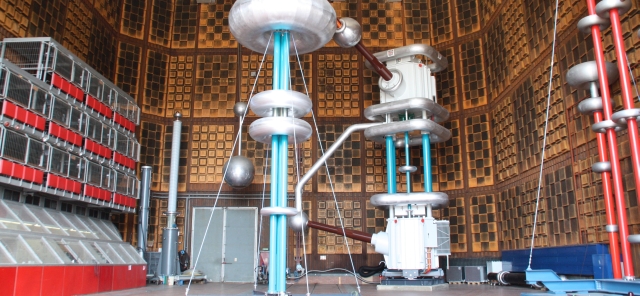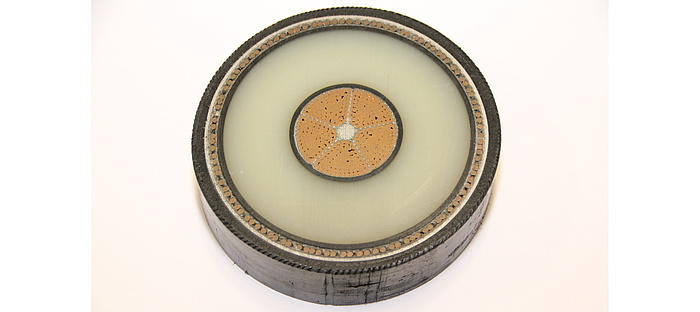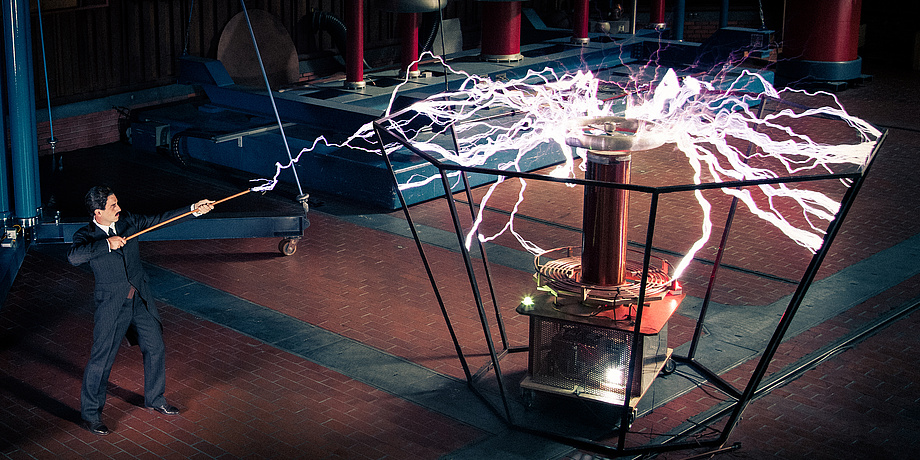Nikola Tesla’s vision of the future was that energy would be available to every human being without limit and free of charge. In his dream of a world energy system, power grids were a stepping stone towards to a wireless system capable of distributing energy to the entire world through air and earth.
Although physical limits still apply to the wireless long-distance transmission of electricity – more than 120 years after Tesla’s experiment to transmit electromagnetic pulses over long distances through the air and earth – researchers are already working on key technologies to pave the way for the global supergrid – an "electricity highway" that connects regions separated by large distances through high-performance power lines. Europe’s supergrid, preparing the ground for the global supergrid, is to be in place by 2035.
An "electricity highway" supports the energy revolution
The politically committed climates objectives and the energy revolution act as drivers for the development of technologies for the supergrid. "The increasing share of power generation from renewable sources based on wind, photovoltaics and solar energy all over the world requires a fundamental alteration of the power grids as well as the optimised integration of renewable power generation," explains Uwe Schichler, head of the Institute of High Voltage Engineering and System Performance at TU Graz. In fact, this is the only way of ensuring that environmentally friendly energy is available in the right place around the clock. The greater the distance between the wind farms or photovoltaic solar power plants, the less likely it is that the wind is slack or the sky cloud-covered at each site at the same time. This increases the reliability of the power supply, always providing that the electricity can be carried to its destination even across long distances. The conventional 380kV transmission grid is unsuitable for this as it would involve massive losses.
The alternative to traditional power transmission lines are high-voltage DC transmission grids with almost zero losses. Active applications of this technology already exist. Thus, a high-voltage DC transmission line connects the island of Gotland in the Baltic Sea with the Swedish mainland. The next step is now to interconnect the high-voltage DC transmission grids and turn them into a supergrid.

In commemoration of the 150th birthday of electrical engineering pioneer Nikola Tesla, the high-voltage test laboratory of TU Graz was renamed the Nikola Tesla Laboratory.
"Preparing the ground for the supergrid of the future requires combining the high-voltage three-phase power grids existing in Europe with high-voltage DC transmission grids," says Uwe Schichler. To couple the different DC voltages of high-voltage DC transmission lines, TU Graz is currently conducting research on so-called "modular HVDC/DC multilevel converters". Furthermore, electrical insulation systems for the transmission grids also need to be optimised. While the Institute of High Voltage Engineering and System Performance participates in the "PolyComp" K-Project, set up to develop insulation materials for use in high voltage generators and transformers, it also engages in tests that focus on the service life of high-voltage cables. "Cables laid underground are suitable both for high-voltage three-phase power grids and high-voltage DC power grids. Especially where it is imperative to preserve the natural appearance of the landscape, underground lines are a true alternative to overhead lines," remarks Rudolf Woschitz from the Institute of High Voltage Engineering and System Performance. In the Nikola Tesla Laboratory, he carries out voltage tests, thermal stress tests and extra-high voltage tests on the cables. The rigid test programmes sometimes run for an entire year to guarantee the reliability and functionality of the cables under diverse climatic conditions.
The Nikola Tesla Laboratory, the high-voltage hall at TU Graz, performs analyses and tests in all areas of high-voltage engineering. In addition to many research projects, it also carries out quality tests of high-voltage cables according to a procedure developed here at the institute, as well as service life tests and type approval tests according to the applicable standards for high-voltage cables.

Cross section of the 400kV cable (diameter: 12.5cm) – first use in Austria by Wiener Netze (Vienna grids), in active operation since 2005. The Institute of High Voltage Engineering and System Performance was instrumental in the implementation of the project and heavily involved in the commissioning tests.
Tesla’s brain work in the 21st century
Nikola Tesla, the "Wizard of Electricity", first created a mental image of his inventions, then he "tested" his imaginary models until he had devised the final construction plan for his equipment. Virtual models still support research and testing at the Institute of High Voltage Engineering and System Performance, but today the researchers are supported by high-performance computers. Modelling high-voltage grids is a research focus of Stephan Pack. He explains: "Apart from operating loads, high-voltage grids are also exposed to other stresses attributable to switching operations, unintentional errors and lightning strikes into the overhead lines. When lighting strikes, it briefly injects large impulses of electricity into the systems. As a result, the grid is subjected to overvoltages." Using numeric computer models, he carries out calculations that allow him to simulate the voltage loads to which high-voltage grids are exposed in stationary state – with normal operating current – and in transient state such as strikes of lightning. The numerical calculations form the basis to coordinate protective devices such as overvoltage arresters.
This research area is anchored in the Field of Expertise "Sustainable Systems", one of five research foci of TU Graz.

